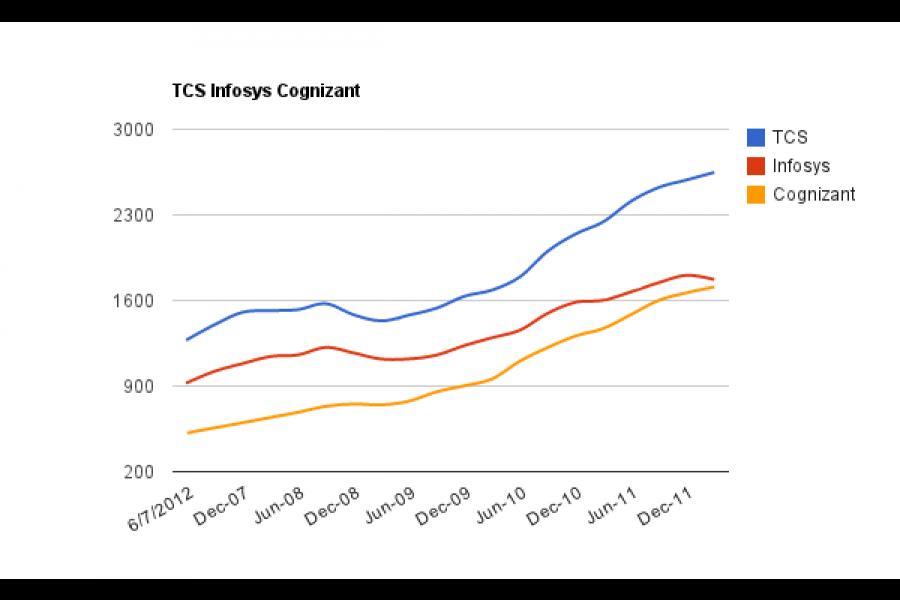Today in Tech: Infosys, Mid-caps 2, Higgs Boson
Infosys: New sales strategy While most of the conversations on Infosys in the media has been around acquisitions, a Business Line report tells us that Infosys has been busy working on a different engine: its sales strategy. The company is "moving away from the top-down strategy (especially for outsourcing deals) to the setting up of client-partner teams" – which will be aided by a delivery partner team, it says. Also, Infosys has identified 50 star clients - “must have, must grow” accounts that can give extra $100 million business. The report quotes an IDFC analyst saying it will let Infosys respond faster to changes in environment and make fast decisions. Infosys has not commented, as it’s in a 'silent period'.
Both moves are interesting, except that the devil, really, is in details. For that, we might have to wait till July 12, when Infosys announces first quarter results.
There is no doubt that structure matters. It’s something CEOs spend a lot of time thinking about. Cognizant attributes its fast growth to the way it has structured its sales and delivery team in a 'Two-in-a-Box' model, and the way the sales and delivery teams are incentivised to work together. Harvard has a case study on the model, which has not stopped Cognizant's CEO from constantly tweaking it. Similarly, the empowerment that results from the way an organisation is structured can turn into revenues. When N Chandrasekaran took over as the CEO of TCS, he divided the company into 60 small units, each of which have up to 3,000-5,000 people and revenue of $100 million to $150 million. Units of this size, Chandra told Forbes India earlier, “allow people a lot of freedom to do things. They don’t have to check with me or Maha[lingam]. It gives them the feeling that they are in control. In turn, I hope they will deliver the results that are expected of them”.
But even more important than the structure, is the willingness to grab market share even at some cost. Focusing on big clients is not new even to Infosys. But the key issue is not about identifying a specific number of star clients, but it’s about the quantum of resources that a company is willing to invest in pursuit of business from them. Cognizant, the rival that’s close on the heels of Infosys, has this strategy too, except that it call them the ‘Strategic Clients’ . On them, Cognizant has been willing pour resources disproportionate to the revenues they gave at a specific point of time. What Cognizant had to give up though was several percentage points in operating margins. It’s 19-20% for Cognizant. For Infosys, it’s 29-30%, a number, Infosys has often said, it would not compromise on.
Whether the new normal will change that stance is the big question.
The rise of mid-caps – part 2.
Yesterday, we briefly looked at the rise of mid-caps. Today, Business Stanard has a piece on one of the rising mid-cap stars – NIIT Technologies. It contains this interesting sentence: "At the rate it’s going, the goal of eventually becoming one of Indian IT’s heavy hitters may not be wildly as improbable as it may have been three years ago."
Those who try to answer that question often come face to face with two sets of contradictory data points. The first relates to the growing gap between the tier one and tier two players. Even seven or eight years ago, the gap between the tier one and tier two was not big. But thereafter, the bigger players accelerated and the tier two players found it difficult to keep pace, despite smaller size. Now, people even talk about a separation among the top five. Check out this chart.
But the second forces us to see the bigger picture. The top Indian players together account for less than 10 percent of the total outsourcing market, and big acquistions can quickly topple the pecking order. Which means there is a lot of scope for an aggressive player to break in.
Higgsteria
It would be a sacrilege not to post something on Higgs Boson when the whole world seems to have gone crazy about it. I am sure it has got to do with naming it God Particle, even though scientists hate that term because it over emphasises the importance of Higgs Boson in the larger scheme of scientific knowledge. Now, when Prof Higgs said “I never expected this to happen in my lifetime and shall be asking my family to put some champagne in the fridge”, he was alluding to something that relates to its name. Can you make a guess, without Googling?
While you guess, check out these three videos. If you have time only for one, go for the last.
[youtube]http://www.youtube.com/watch?v=QG8g5JW64BA[/youtube]
[youtube]http://www.youtube.com/watch?v=RIg1Vh7uPyw[/youtube]
[vimeo]http://vimeo.com/41038445[/vimeo]
My colleague Shishir Prasad pointed out to the best thing that emerged out of the collision of sub atomic particles at CERN. This sentence in New York Times: "According to the Standard Model, the Higgs boson is the only manifestation of an invisible force field, a cosmic molasses that permeates space and imbues elementary particles with mass. Particles wading through the field gain heft the way a bill going through Congress attracts riders and amendments, becoming ever more ponderous."
Also of interest
• Inside Singularity Unversity: ten weeks in tech’s most coveted community: Venture Beat
• Why censoring social media might mean more-violent protests : Gigaom
• A cotton T-shirt may one day charge your cell phone: BGR
• Google Tablet Analysis Points to Thin Margins : WSJ
• How to Analyze Your Website's Performance: PC World
• It's Higgs Day! [Roundup] : io9
The thoughts and opinions shared here are of the author.
Check out our end of season subscription discounts with a Moneycontrol pro subscription absolutely free. Use code EOSO2021. Click here for details.

